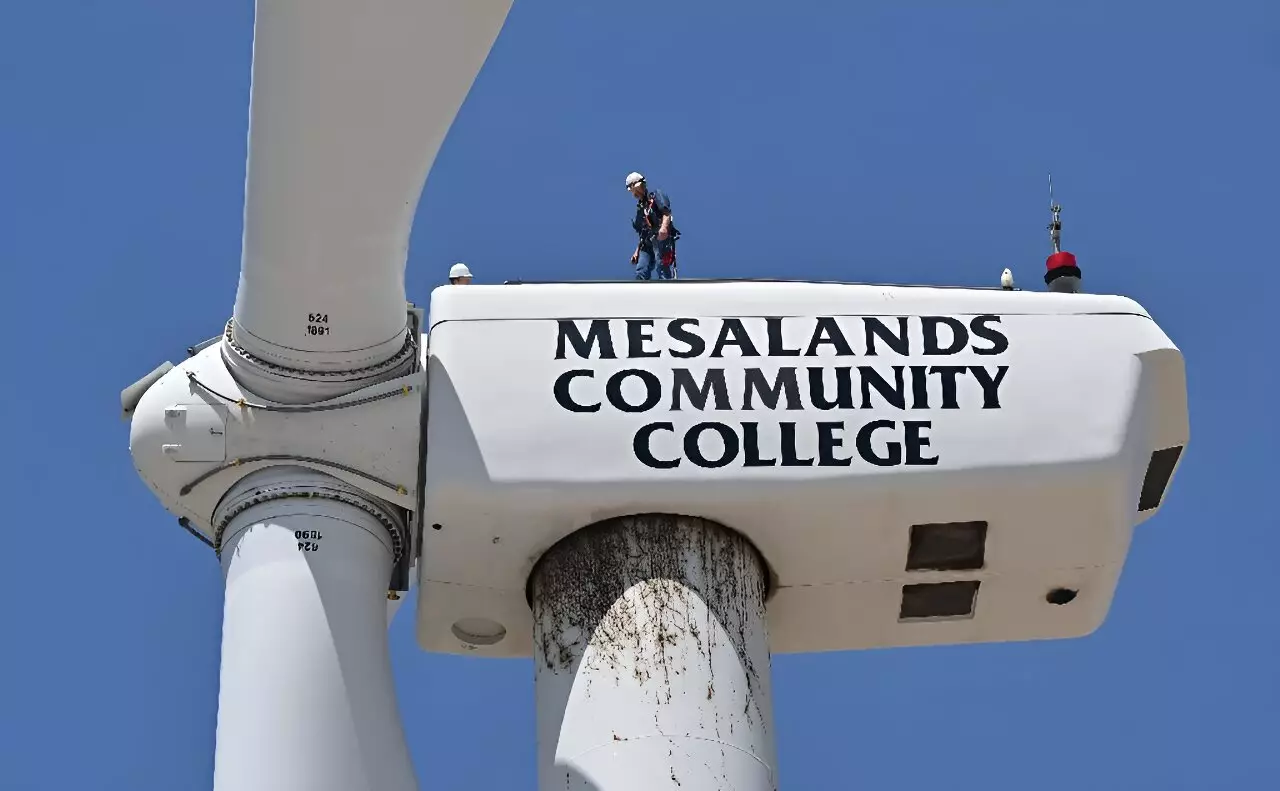The wind industry in the United States has experienced exponential growth over the past decade. With around 75,000 large turbines currently in operation, the sector is capable of powering approximately 40 million American homes. This rapid expansion has resulted in a shortage of skilled technicians to maintain and operate these turbines, leading to challenges in training new professionals to keep up with the industry’s demands.
Training to become a wind turbine technician is a rigorous process that requires both technical skills and physical endurance. At Mesalands Community College in New Mexico, technicians-in-training undergo intensive instruction under the guidance of experienced professionals like Terrill Stowe. Students start by practicing on the ground with replica generators, gradually progressing to the turbine’s “nacelle” high above the ground. Stowe emphasizes the importance of overcoming fears of heights, as working on a wind turbine can be a daunting experience, especially in windy conditions.
Despite the challenges and risks associated with the job, many young individuals are drawn to the wind industry for various reasons. Nathaniel Alexander and Kevin Blea, two former students who have now become instructors at Mesalands Community College, cite their interest in clean energy and the opportunity for lucrative salaries as motivating factors. A two-year degree in wind turbine technology can open doors to high-paying jobs that offer annual salaries ranging from $50,000 to $90,000.
In rural parts of New Mexico, where wind turbines are a common sight, the political landscape often influences public perception of the industry. While recent government incentives like tax credits have boosted the growth of the wind sector, not everyone is enthusiastic about the role of green politics in shaping the industry. Some individuals, like Alexander, prefer to focus on the practical aspects of the job rather than the broader political implications of renewable energy.
As the wind industry has evolved, so too have safety standards for technicians working on wind turbines. In the early days of the industry, technicians faced hazardous conditions, including climbing frozen turbines in extreme weather. Today, safety measures are stricter, with technicians refusing to climb in unfavorable weather conditions. Despite the risks involved, professionals like Blea find the work rewarding, highlighting the unique experiences and breathtaking views that come with the job.
Training individuals to become wind turbine technicians is vital for sustaining the growth of the wind industry in the United States. As the demand for clean energy continues to rise, the need for skilled professionals to operate and maintain wind turbines will only increase. By addressing the challenges in training and safety standards, the industry can ensure a sustainable future while providing rewarding career opportunities for individuals seeking to make a difference in the renewable energy sector.


Leave a Reply